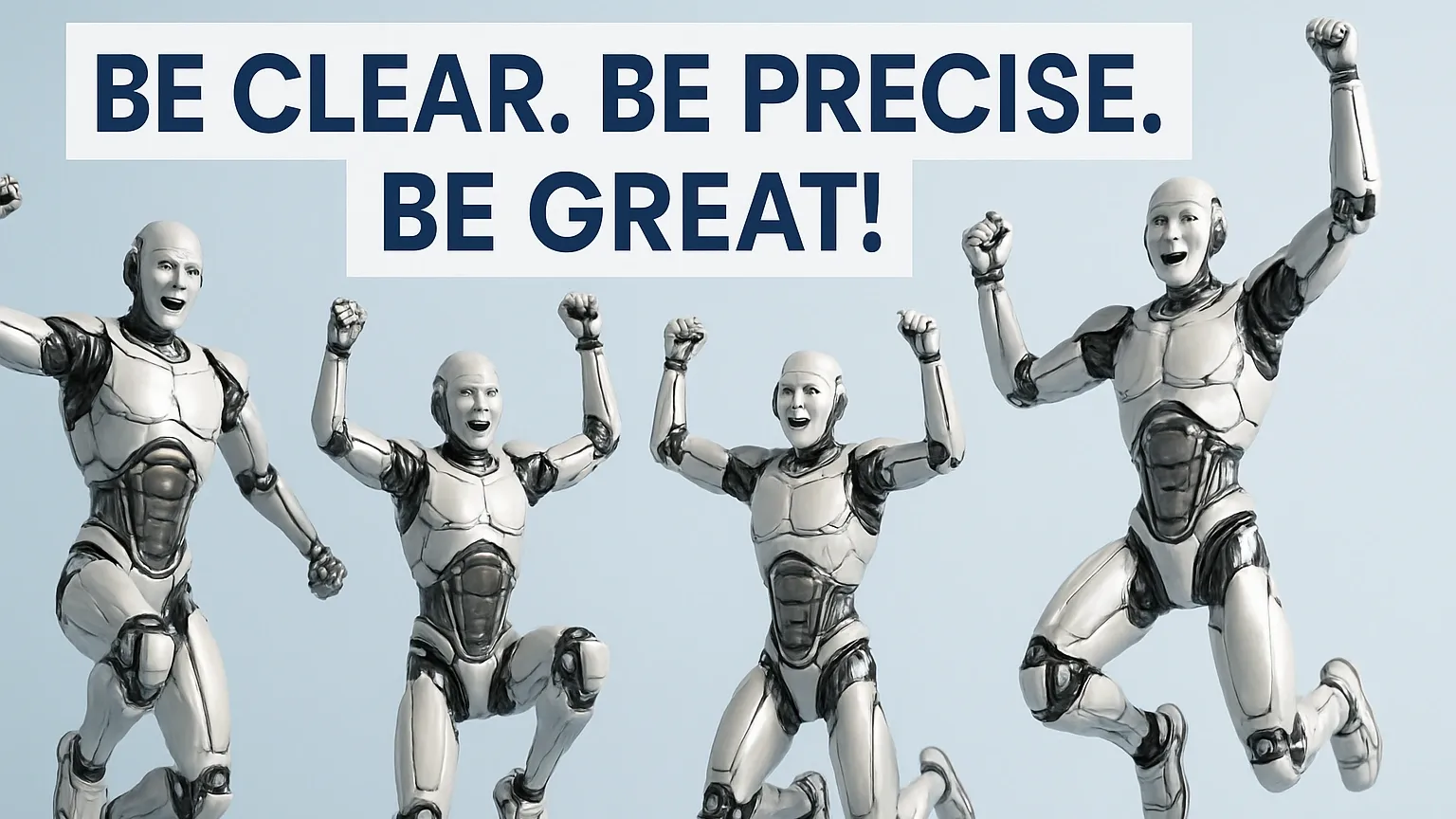
If you've been using AI for a while, you've probably noticed a pattern: some prompts make your AI like ChatGPT sound like a seasoned consultant; others make it sound like your college roommate guessing on a group project. The difference? Structure.
The pros use RTFC — Role, Task, Format, Criteria. It’s not a buzzword. It’s how professionals turn AI from a parlor trick into a productivity weapon.
Let’s break it down.
1. Role: Tell the AI Who It Is
AI doesn’t “know” who it’s supposed to be unless you tell it. Setting a role gives context, tone, and expertise.
Example:
“Act as a senior manufacturing consultant with 20 years of experience in lean operations.”
This single line changes everything. You’ve just given ChatGPT a perspective — one that aligns with your industry and goals. A prompt without a role is like asking a stranger for advice in the dark.
2. Task: Be Crystal Clear on What You Want
The AI can’t read your mind. You have to tell it exactly what to do.
Bad: “Write something about our sales team.”
Better: “Write a 300-word sales pep talk for a quarterly meeting focused on overcoming missed targets.”
The more specific your task, the more the AI focuses its energy. Think of it as setting the GPS before hitting the road.
3. Format: Define the Output
You wouldn’t tell an employee, “Just give me stuff.” You’d say, “I need a two-slide summary,” or “Write a one-page brief.”
Example formats:
-
“Write a 5-step guide.”
-
“Draft a 3-paragraph executive summary.”
-
“Create a table comparing product launch strategies.”
When you specify format, AI becomes a structured collaborator, not a rambling intern.
4. Criteria: Define What ‘Good’ Looks Like
Here’s where you tighten the bolts. Give the AI the standards for success.
Examples:
-
“Use a persuasive, confident tone.”
-
“Focus on B2B manufacturing leaders.”
-
“Cite examples from real companies.”
Criteria tell the AI what to emphasize — and what to avoid. Without them, you’re just hoping it gets lucky.
5. Expert Move: Ask ChatGPT to Improve Your Prompt
Here’s where the real sophistication begins. Before running your main prompt, run this:
“Improve this prompt to make it clearer, more detailed, and more effective for ChatGPT.”
This meta-move lets the AI help you sharpen your own thinking. It’s like having a writing coach who knows how it likes to be talked to.
Example:
Your prompt: “Write a marketing plan for a new SaaS product.”
Improved version (by ChatGPT): “Act as a SaaS marketing strategist. Create a 3-page marketing plan for launching a new B2B SaaS product that automates invoice reconciliation. Include target audience profiles, pricing strategy, and first-quarter marketing KPIs.”
That’s the power of RTFC — and the discipline of asking the machine to help you think better.
AI Prompts
Final Thought
The future of work won’t be about who uses AI — everyone will. The winners will be those who know how to talk to it.
RTFC isn’t just a prompt framework; it’s a way of thinking. It forces clarity, intent, and discipline — the same qualities that separate effective leaders from noisy amateurs.
And if you want a quick litmus test before you hit “Enter,” ask ChatGPT one more question:
“Can you make this prompt even better?”
Chances are, it will. And so will you.

